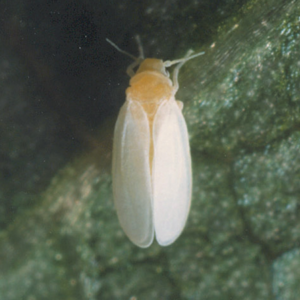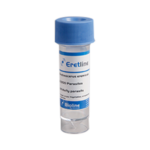The Tobacco or Silverleaf Whitefly is now the dominant whitefly pest in Mediterranean regions and appears to be spreading northwards. As with the Glasshouse whitefly, the larvae produce copious amounts of honeydew, but adults invading the crop also introduce virus diseases which can devastate the crop. Bemisia tabaci is recorded as the vector of 111 virus diseases of plants around the world. In tomatoes the principal virus is Tomato Yellow Leaf-Curl Virus (TYLCV), whilst in cucurbits there are several species with different symptoms, such as Cucumber Vein Yellowing Virus (CVYV) and Cucurbit Yellow Stunting Disorder Virus (CYSDV).
The adult Tobacco Whitefly holds its wings alongside the body, revealing the yellow body colour and giving them an elliptical profile. This is in contrast to the Glasshouse Whitefly, which holds its wings in a tent-like fashion over the body, hiding the body and giving it a triangular outline.
Adult Bemisia tabaci will settle and feed on much older leaves than Trialeurodes vaporariorum, so all stages can occur on any part of the plant.
Larvae of Bemisia tabaci are generally smaller than those of Trialeurodes vaporariorum, slightly pointed towards the rear end, and remain flattened throughout their development. Trialeurodes vaporariorum larvae are smoothly elliptical, and during the later instars become distinctly thickened, with vertical sides.






